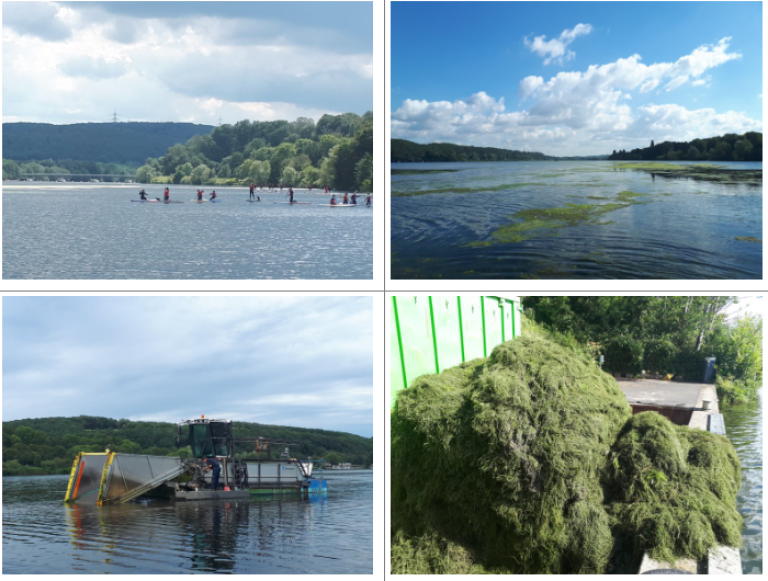Case study site: Lake Kemnade (Germany)
Invasive Elodea nuttallii and its management in Lake Kemnade (Germany)
Mass development of the non-native species E. nuttallii is a challenge in many water bodies in Germany. Problems arise mainly in shallow lakes heavily used for different leisure activities. One of those is Lake Kemnade (area: 1.25 km², mean depth 2.4 m), an impounded lake built in 1979 along the course of the River Ruhr.
Lake Kemnade is important for different types of leisure activities in the densely populated area of the Ruhrgebiet. Macrophyte mass developments (mainly by E. nuttallii) are managed by daily mowing with a boat between May and September.
The stakeholder involved in this case study is the Ruhrverband Essen, a public water management company without profit-making intentions. It operates Lake Kemnade and other reservoirs, which ensure the water supply of 4.6 million people, and the treatment of wastewater for 60 towns and communities.
